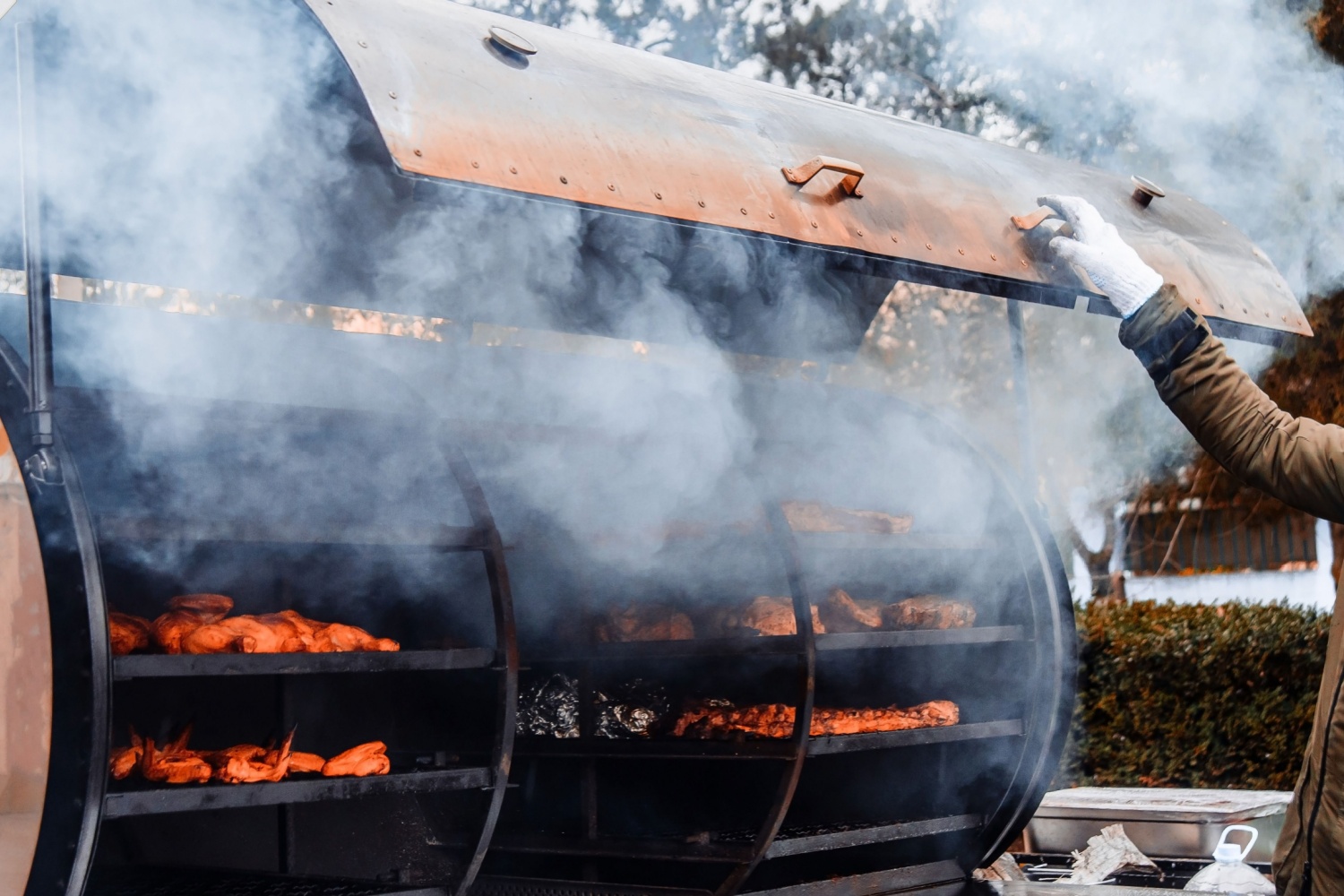Whether summer cookout, fall football tailgate party or holiday feast, smoked meats provide a delicious menu option — you know, smoked ribs, brisket, pork shoulder or butt for pulled pork sandwiches, chicken, fish or other fare. And if you are someone who puts a meat smoker to good use, USDA food safety expert Meredith Carothers says there are some tips for you to know to keep food safe from foodborne bacteria.
“Starting with a clean smoker — a lot of food particles get charred and onto the grates — making sure you’re scraping off those bits before you put new ones on there.”
Marinate or brine your meats before smoking them. Carothers points out a couple of food safety considerations.
“It’s just possible for juices from the raw meat and poultry to kind of slosh around your kitchen or to get in other places. So cleaning as you go and sanitizing after to make sure those surfaces are clean. As you marinate those items, they can go in the fridge for one to two days, usually.”
Using a Ziplock freezer bag — both for storage and refrigeration of marinating meats and transporting from the fridge to the smoker — is one way to prevent spillage of juices and avoid cross-contamination.
Now, a reminder about separation as it applies to plates and utensils:
“If I just use tongs to take raw meat and poultry out of a bag and put it onto the grill, that has raw meat or poultry juices on it — that has foodborne illness bacteria on it. Keeping in mind to have a different set of utensils there, your grill-ready swap is important. Or taking those tongs inside to wash and sanitize before bringing them back out.”
Separating raw and cooked foods to prevent cross-contamination also applies to plates, cutting boards and other food prep items.
Smoking meats is a low-and-slow cooking method, yes — but how low can you go?
“The smoker needs to be set between 225 degrees Fahrenheit and 300 degrees Fahrenheit throughout the cooking process. Anything less than 225 degrees is going to be too low for the food to move through the danger zone and really cook fast enough and hot enough for the bacteria to be killed before they may reach dangerous levels.”
Use a food thermometer to determine if meat has reached proper internal cooking temperatures.
Another food safety consideration when smoking larger cuts of meat, like a pork roast or beef brisket:
“You don’t want to smoke a big portion of food and then just leave it like that and put it in the fridge because it may not cool quick enough. You have to break it down into smaller portions in order for that to cool safely.”
Do not leave smoked foods out at room temperature for more than two hours to avoid bacteria.
Carothers says for leftovers:
“Safe storage time frame is four days in the fridge. Or you can freeze items — you have at least two to six months for things in the freezer to keep their great quality without any issues.”


